As we celebrate the month of love it seems only appropriate to take a look into some of the most romantic jewels in our collection. Although the gifting of jewellery has been a symbol of love and affection since ancient times, it was in the Victorian era that sentimental jewellery surged in popularity. Jewellery of this time was all about expressing your deepest affections to those you loved the most. Packed with layers of meaning, secret messages of love and personal mementos jewellery of this era was deeply personal and achingly sentimental. 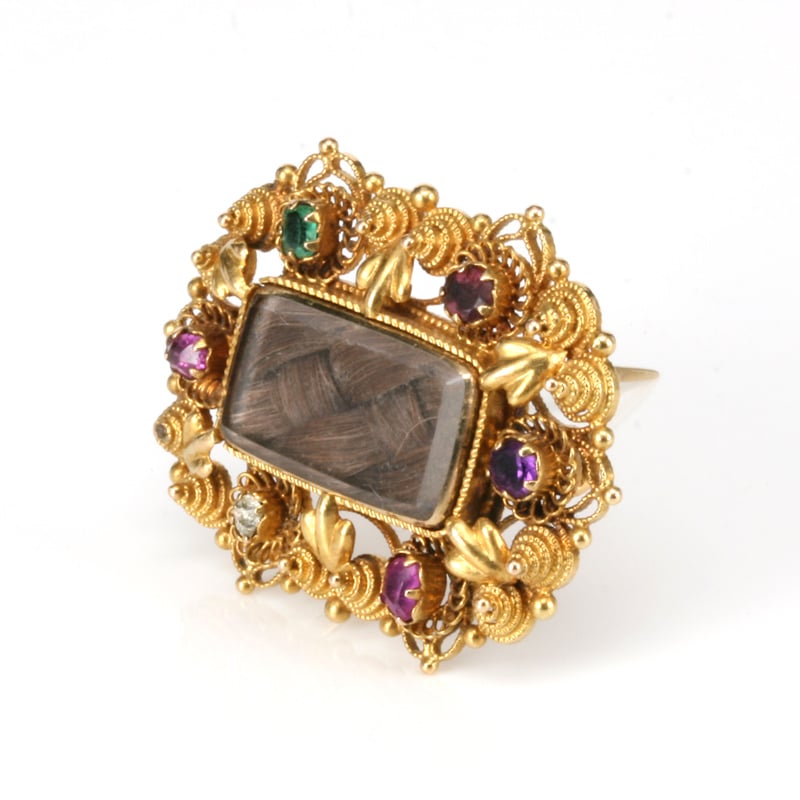
This trend of sentimentalism can be traced from the societal shifts in France following the French Revolution. The revolution challenged established monarchy and religious institutions within France and a new value system for its society emerged. The ideals of liberty, equality and fraternity became the basis of the value system for the French population. These shared ideals of a society based in freedom, equality and companionship saw an emphasis placed on personal relationships and affection between individuals. The development of these ideals saw a greater focus on sentimentality and this concept was soon being depicted across all creative pursuits including art, literature, music, architecture, fashion and jewellery. British fashion was heavily influenced by French culture and these values of sentimentality resonated with Queen Victoria. It was the British monarch's affinity for sentimental jewels that resulted in them becoming highly popularized across the Victorian era
A mixture of French and English sayings became widely popular across jewellery design and were exchanged as tokens of love between couples and friends. The French term 'souvenir' which translates to 'memory' became a popular sentiment displayed on jewellery pieces. Other popular sentiments of deep affection included; regard, love, dearest, mizpah and AEI, which stands for 'amity, eternity and infinity'. These sentiments were available across a range of different jewels including rings, lockets, brooches, bracelets and pendants.
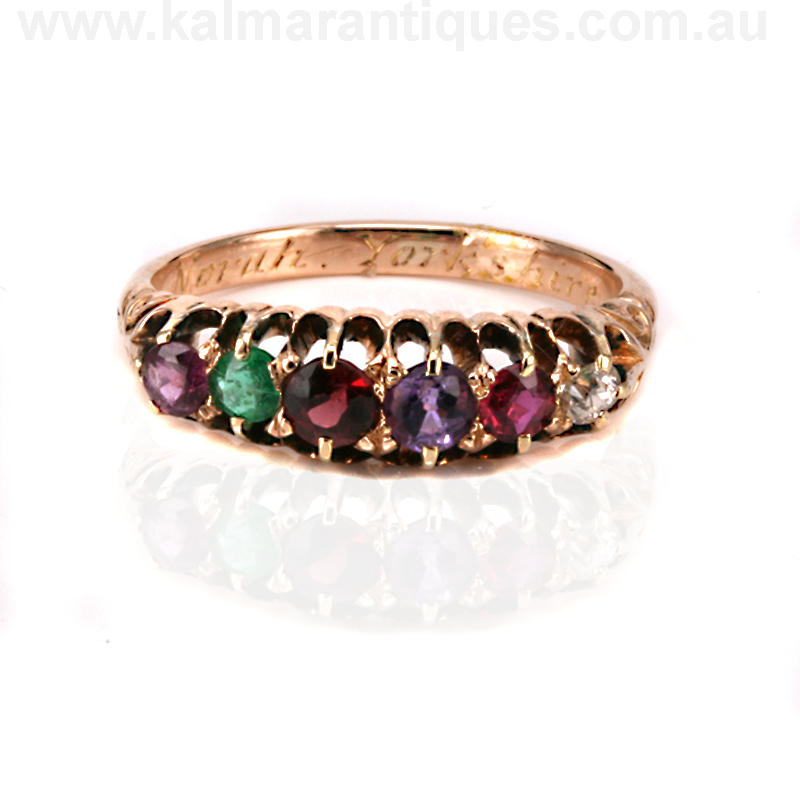
One of the most creative ways that such sentiments were incorporated into jewellery design was through acrostic jewellery. Coloured gemstones would be ordered so that their first letters would spell out a word. “The Napoleonic taste for the symbolism of gemstones, and for names and mottoes spelt out with the initial letter of appropriate gemstones, quickly spread" (Bennett & Mascetti, 1989). The above brooch features a lock of hair in the centre with coloured gemstones set into the border. The first letters of each gemstone spell out the word 'Regard' - ruby, emerald, garnet, amethyst, ruby and diamond. The hidden sentiment accompanied by the personal relic of a lock of hair shows how deeply personal this piece of jewellery was to the wearer. Read more about acrostic jewellery here.
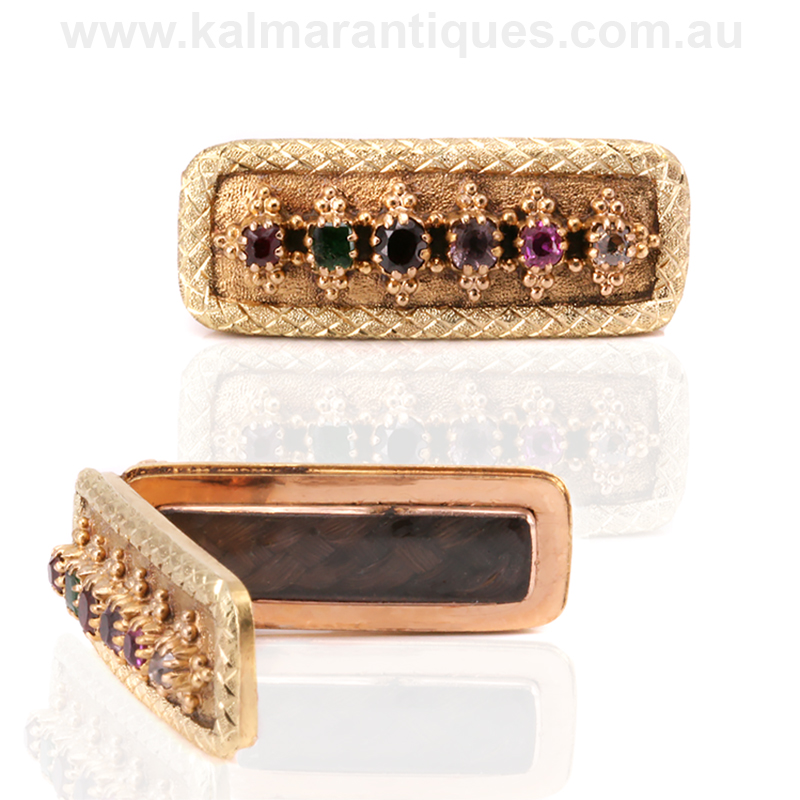
Lockets were another highly popular keepsake to be exchanged between couples and family. Lockets during this time would be used to store mementos of their loved one, most commonly being a lock of hair or a photograph.
“Women of the 19th century would swap locks of hair as a love token the way young girls today might wear friendship bracelets" (Little, 2016).
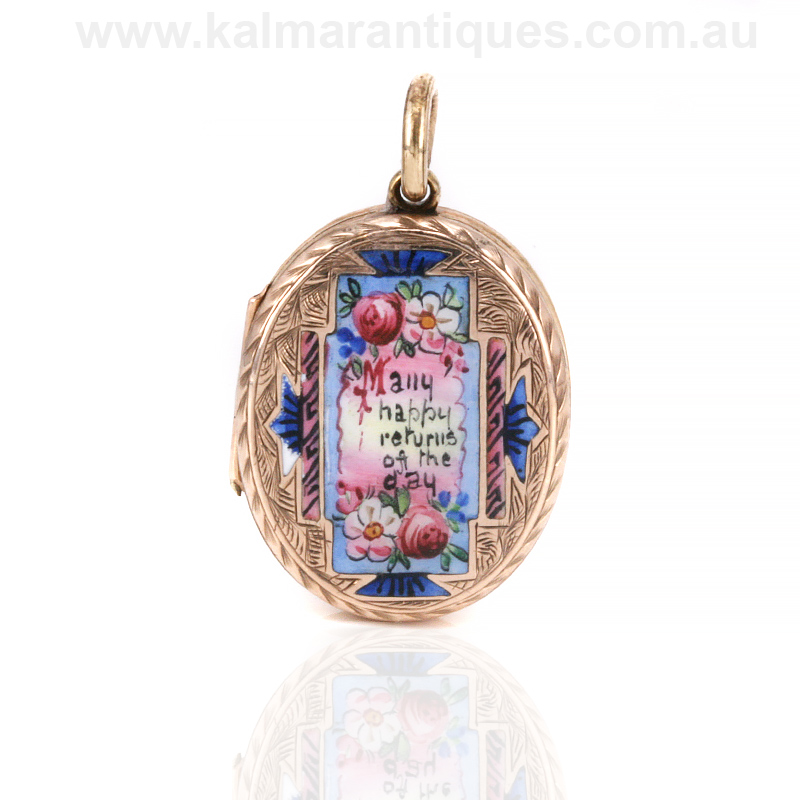 It's not surprising then, that so many Victorian Era rings and pendants feature lockets on the reverse to house these personal relics. “Locks of hair were still concealed in small compartments at the back of jewels. Veiled and unveiled messages of love, rebuses and mottoes, were inscribed at the back of brooches and pendants or inside ring shanks" (Bennett & Mascett, 1989).
It's not surprising then, that so many Victorian Era rings and pendants feature lockets on the reverse to house these personal relics. “Locks of hair were still concealed in small compartments at the back of jewels. Veiled and unveiled messages of love, rebuses and mottoes, were inscribed at the back of brooches and pendants or inside ring shanks" (Bennett & Mascett, 1989).
Floriography, also known as the language of flowers, was another popular past time of the Victorian era. The attributing of particular meanings and sentiments to flowers and their arrangements created a whole world of cryptic communications.
"The language of flowers was used as a secret code and the flowers that most often appeared in romantic jewels were those able to convey sentiments of love, friendship and affection, such as ivy leaves and forget-me-nots" (Bennett & Mascetti, 1989).
This adaptation of floriography into jewellery design calls for close consideration of all design elements. What could appear as a floral motif for decorative purposes could have layered meanings of affection intended for the wearer.
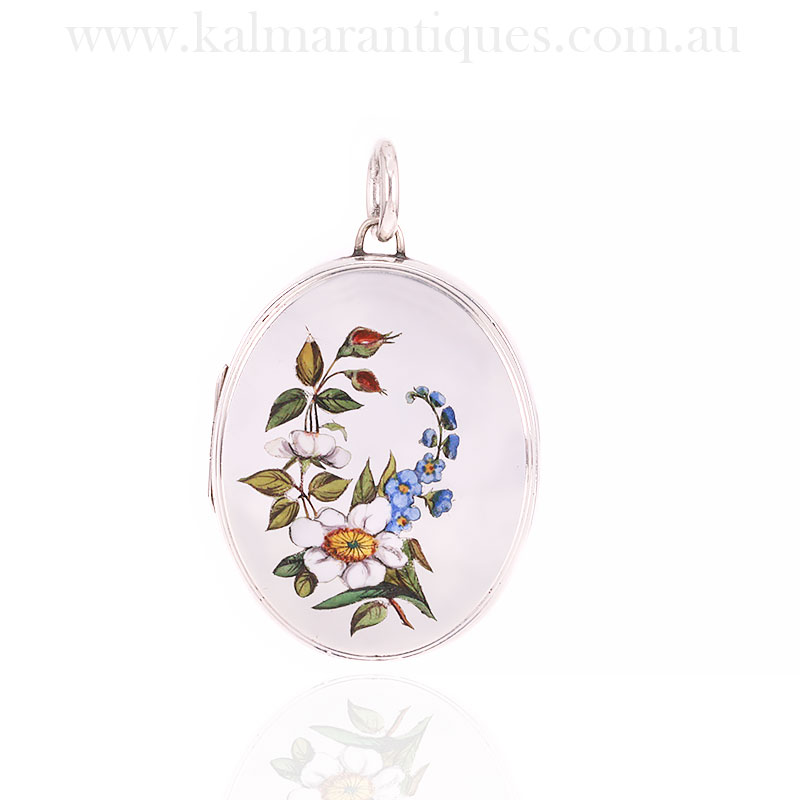
The change in societal values after the French Revolution saw the emergence of sentimentality throughout the Victorian era. The jewellery from the time reflects these cultural shifts and their influence on art and fashion within France and abroad. Love token jewellery from this era so strongly evokes the kinship between the gift-giver and recipient. The sentiments that rose in popularity are bold and deeply romantic. The exchange of personal relics in the form of hair, although no longer fashionable, creates a tangible connection to the wearers of these jewels and their connections to their loved ones. The creation of acrostic jewellery and the Victorian language of flowers causes us to read deeper into the design of these jewels and search for the hidden sentiments. These jewels are just a few examples of how meaning was incorporated into jewellery design during the Victorian era, though there are plenty more examples that have not been discussed here. These incredible pieces tell us the story of our human history and the connections of those who came before us.
Sources:
Bennett, D & Mascetti, D (1989)"Understanding Jewellery": ACC.
Little, B (2016) "Trendy Victorian Era Jewelry Made From Hair": National Geographic.
Peters, Hayden (2022) "Georgian Heart Regard Locket", The Art of Mourning.

